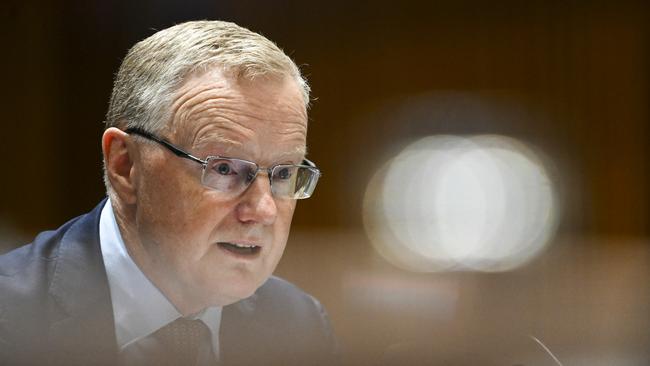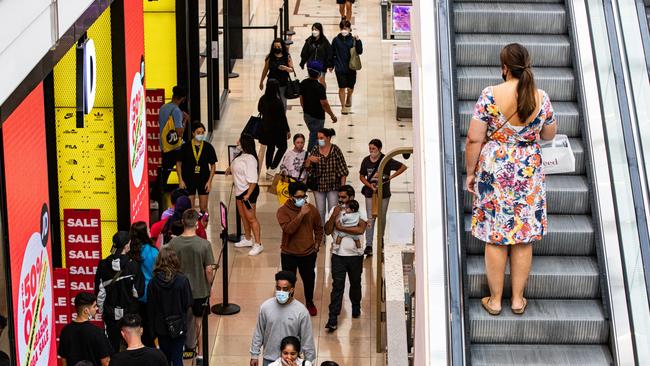RBA blames Covid-19 policy stimulus for inflation ‘forecast errors’
The Reserve Bank has blamed a range of factors as well as unprecedented fiscal and monetary policy stimulus during the Covid-19 pandemic for recent inflation ‘forecast errors’.

The Reserve Bank has blamed a range of factors including unprecedented fiscal and monetary policy stimulus during the Covid-19 pandemic for recent inflation “forecast errors”.
Amid an independent review of the RBA’s setting of monetary policy, due to report its findings to the federal government by March, the central bank noted “inflation in Australia over the past year or so has been significantly higher than the bank and other forecasters expected a year ago”.
Whereas in its August 2021 Statement on Monetary Policy, the bank projected inflation would remain around 1.5 per cent to September 2022, it materially upgraded its inflation forecasts in each subsequent statement. September 2022 underlying inflation had risen to 6.1 per cent.
“None of the market economists the bank surveys nor any market-based measures predicted the extent of the pick-up in inflation,” the RBA said in its November Statement on Friday.
“While a few economists predicted a rise in inflation in early 2021 owing to pandemic disruptions and strong policy stimulus, the magnitude of the increase was broadly underestimated.”
It came as the RBA revised up its previous forecast for inflation to peak at 7.8 per cent in December to 8 per cent, while predicting inflation would slow to 4.7 per cent in 2023 and 3.2 per cent in 2024.
As per convention, the forecasts were conditioned on a path for the cash rate in line with expectations derived from surveys of professional economists and market pricing.
The RBA aims to achieve an inflation target of 2-3 per cent, on average, over time.
While noting consumer demand exceeded expectations in many advanced economies in the first year of the pandemic, reflecting strong fiscal and monetary stimulus; demand for consumer goods “stayed surprisingly strong as restrictions eased”, the RBA said.

Global imbalance between supply and demand for goods has “persisted for longer than anticipated by most forecasters and central banks, reflecting ongoing Covid-19-related disruptions to supply, shipping congestion, shifts in consumption patterns and stronger-than-expected demand”.
“The pandemic and related restrictions also interrupted production and distribution,” the RBA said.
“Even without these production disruptions, supply chains would have struggled to accommodate the sudden and substantial surge in demand for goods seen in many economies.”
The RBA also said unpredictable shocks including Russia’s invasion of Ukraine, the timing and extent of flooding on Australia’s east coast, domestic energy market pressures and other disruptive events contributed to the strength in inflation.
Its research has indicated supply shocks – including Russia’s invasion of Ukraine – caused at least half of the rise in inflation in other advanced economies.
“Preliminary modelling suggests that this has also been the case in Australia,” the RBA said.
“These shocks have had a persistent effect on inflation.
“It is also possible that multiple supply shocks have had a compounding effect on inflation.”
Another factor was domestic capacity constraints. Economic growth for the year to June was “somewhat weaker than the forecast, as dwelling and business investment were weaker than expected, despite very strong demand, in part reflecting that capacity constraints were more binding than had previously been anticipated”.
The inflationary effects of capacity constraints in some sectors were “underappreciated” and consumption recovered quickly after the easing of restrictions for the Delta outbreak in late 2021.
“While the bounce-back was anticipated based on experience from lockdowns earlier in the pandemic, this particular recovery was still a little stronger than expected,” the RBA said.
“Inflationary pressures from strong household demand began to materialise in some items as households returned to more normal patterns of services consumption.”
The RBA also said it underestimated the underlying momentum in the labour market, which was “partly obscured by the effects of lockdowns in the second half of 2021”.
“The unemployment rate has declined at a much faster pace than previously anticipated to reach levels last observed in the mid-1970s,” it said.
“Government support packages and accommodative monetary policy avoided labour market scarring during the early stages of the pandemic and the Delta lockdowns, and provided the momentum for future employment growth.”
Modelling showed “the direct contribution of this to the forecast miss on inflation has been relatively small” but “the impact on sectoral supply constraints from the difficulties in obtaining labour has contributed to inflation by running up against strong demand.”







To join the conversation, please log in. Don't have an account? Register
Join the conversation, you are commenting as Logout